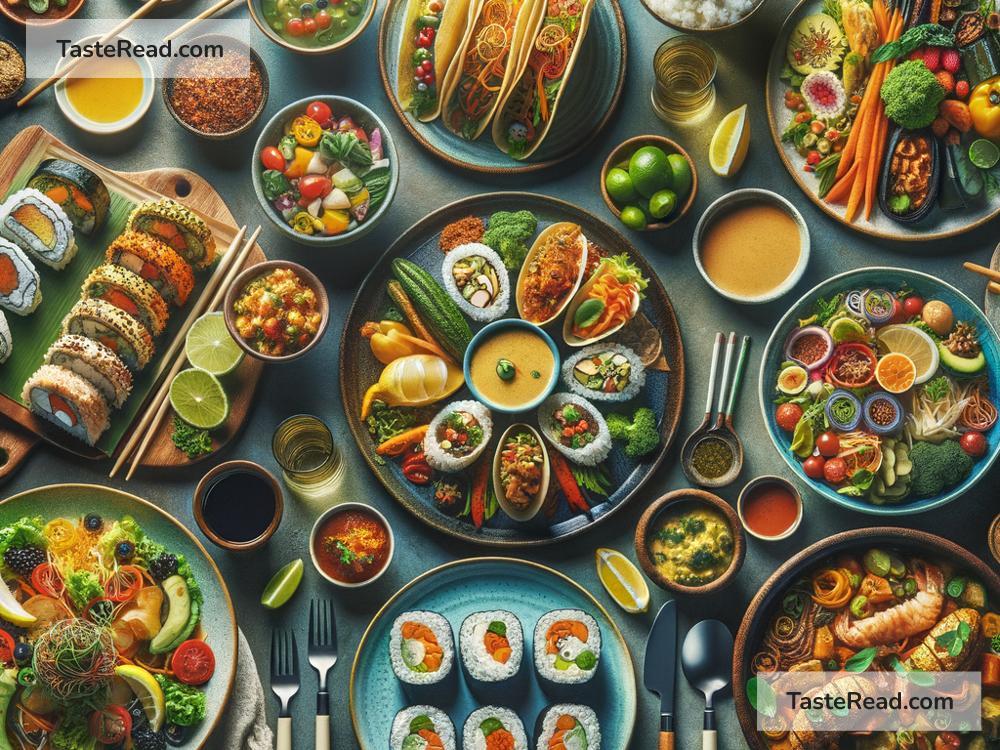The Impact of Globalization on Dietary Patterns
Globalization has reshaped the ways we live, communicate, and even eat. From pizza in Beijing to sushi in New York, globalization has made the world seem smaller by connecting people, products, and ideas across continents. One of the most visible impacts of globalization is the way it has influenced dietary patterns and food consumption worldwide. In this blog, we’ll explore how globalization affects what we eat, both positively and negatively, using simple language so that the topic is easy to understand.
What Is Globalization?
Before diving into food, let’s clarify what globalization means. Globalization is the process of the world becoming more interconnected through trade, technology, and cultural exchange. It allows goods, services, information, and ideas to flow across borders more freely than ever before. For example, a farmer in France can export wine to Australia, and a company in Japan can ship instant noodles to Brazil.
When it comes to food, globalization means greater access to ingredients, meals, and cuisines traditionally associated with different cultures. This exchange has changed dietary patterns all over the world.
The Positive Impacts of Globalization on Diets
Globalization has brought exciting opportunities to our plates. Here are some of the ways it has improved dietary patterns:
1. Access to Diverse Foods
Thanks to globalization, people can now enjoy foods that were once unavailable or difficult to find. For example, tropical fruits like mangoes, avocados, and bananas are now shipped across oceans to regions where these crops don’t grow naturally. This allows people in colder climates to enjoy a more varied and nutritious diet.
Similarly, cuisines such as Italian, Indian, and Mexican have crossed borders and become popular in countries far away from their origins. Italian pasta, Indian curry, and Mexican tacos are beloved around the globe.
2. Introduction of New Ingredients
Globalization has introduced many countries to healthier ingredients. For example, quinoa, a grain native to South America, has become popular worldwide because of its nutritional benefits. Similarly, superfoods like chia seeds and goji berries are now found in supermarkets everywhere, even in regions where they were once unknown.
3. Economic Growth in the Food Industry
The global trade of food has created jobs and boosted economies. Farmers can now export their crops to other countries, earning more money than they might if they relied only on local markets. Restaurants specializing in international cuisines have also flourished, offering new options to adventurous diners.
The Negative Impacts of Globalization on Diets
While globalization has enriched our dietary choices, it has also brought challenges. Some of these changes may affect our health and cultural identity. Let’s look at how globalization has negatively impacted dietary patterns:
1. Rise of Processed Foods
Globalization has significantly increased the availability of processed and fast foods. International fast-food chains like McDonald’s, KFC, and Domino’s have spread rapidly over the last few decades. These foods are often high in sugar, salt, and unhealthy fats, leading to health issues such as obesity, diabetes, and heart disease.
For example, in countries where traditional diets were rich in vegetables and whole grains, the introduction of fast food has led to a shift toward high-calorie, low-nutrient meals. This change in eating habits is affecting the health of populations worldwide.
2. Loss of Traditional Food Practices
As globalized diets take center stage, traditional diets and local food practices risk being forgotten. For example, in some regions of Africa and Asia, people are switching from locally grown foods to Western-style diets. Losing these traditional diets can also mean losing an important part of cultural identity and history.
3. Environmental Impact of Food Trade
Global trade in food requires transportation over long distances. Shipping fruits, vegetables, and packaged goods across oceans contributes to greenhouse gas emissions, which harm the environment. Additionally, the global demand for certain foods—like avocados—can lead to over-farming, deforestation, and exploitation of natural resources.
Striking a Balance: The Way Forward
It’s important to find a balance between the benefits and drawbacks of globalization on food. Here are some ways we can make better choices:
1. Promote Healthy Eating
Efforts should be made to educate people about making healthy food choices, especially in regions where fast food is replacing traditional diets. Encouraging the consumption of fresh fruits, vegetables, and whole grains can counteract the health risks associated with processed foods.
2. Celebrate Local Foods
Governments, organizations, and communities can work to preserve and promote traditional food practices. By celebrating local cuisines and ingredients, we can retain cultural identity while enjoying global food options.
3. Sustainability in Food Trade
Efforts should be made to reduce the environmental impact of global food trade. For instance, buying locally-produced food when possible can cut down on transport-related emissions.
4. Responsible Global Food Policies
Food industries and policymakers have a role to play in ensuring that globalization benefits everyone. This includes fair trade practices to support farmers, regulations on processed foods, and investments in sustainable agriculture.
Conclusion
Globalization has profoundly impacted the way people eat worldwide, bringing both benefits and challenges. On the one hand, it has expanded our access to diverse cuisines and ingredients, making meals more exciting and nutritious. On the other hand, it has contributed to the rise of unhealthy eating habits and environmental concerns.
As we navigate the globalized food landscape, we must strive for balance. By preserving traditional food practices, promoting healthy eating, and making sustainable choices, we can enjoy the benefits of globalization while minimizing its downsides. After all, food is more than just fuel for the body—it’s a cultural treasure that connects us to our roots and to each other.


